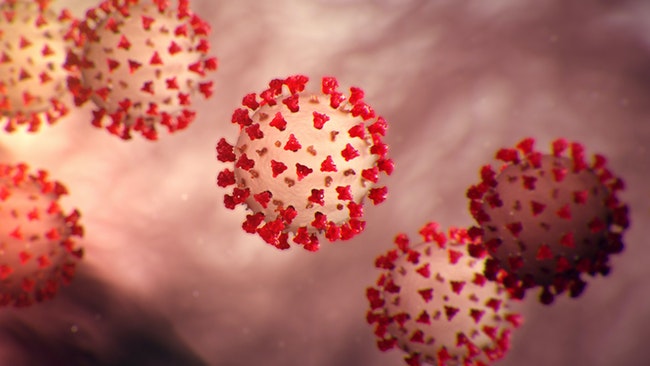
The promise of help for Malheur County came last July as Gov. Kate Brown put the community on her state watch list.
The listing meant state officials were alarmed by how fast the coronavirus was spreading in Malheur County and that the source for too many infections was a mystery. State officials said with the listing, more money and staffing would flow to the area.
A review of state records and interviews with key health officials shows that help did come. The Oregon Health Authority in particular has sent in experts, money and equipment.
But the evolution of the help was sometimes slow and sometimes disjointed, and the impact is unclear. Malheur County continues to post the worst infection rates in Oregon.
The onset of the pandemic presented one of the smallest public health departments in Oregon with one of the state’s biggest Covid challenges. The Malheur County Health Department has been short of nurses, support staff and testing supplies. That’s in part because the county has had to compete with health agencies in other counties and across the country for help and supplies.
State and county officials acknowledge that meshing their efforts to rescue Malheur County from Covid hasn’t always gone smoothly. The intent, they say, has always been there: To do what can be done to drive down the high infection rate that to date has killed 33 people, hospitalized nearly 100 and infected more than 1,600 people.
Sarah Poe, Malheur County Health Department director, appreciates the help that has come to her small agency.
“I really am getting everything I asked for,” Poe said.
Akiko Saito, director of emergency operations for the state health agency’s Public Health Division, said that “our hearts are there with Sarah and her team” and that “I hope we’re making a difference.”
Saito said dealing with the evolving Covid crisis has been complex.
“It’s really to the state’s benefit to help Malheur County get back to phase two and start driving down those rates,” said Jonathan Modie, health authority spokesman. “Our goal is to help Malheur County find solutions to do that.”
Tracking how the health agencies responded to Malheur County’s situation requires delving into what is almost a foreign language of acronyms and government terms.
Consider the “Malheur County Mission Analysis” prepared by the Oregon Health Authority in August.
The analysis distilled the needs seen in Malheur County by Poe and her team and specialists at the state agency. The recommendation: “Approve objectives, associated strategies and messaging themes presented in this mission analysis brief.”
Translated: Let’s get to work in Malheur County.
The analysis pinpointed needs for better communication with the public, more medical staffing for Poe, and using local nonprofit groups to help.
Poe said she got essential state guidance to better organize the county’s resources to respond to the emergency. Key state experts regularly joined in meetings to figure out next steps.
“I have never done anything like that,” Poe said. “You can’t practice this.”
Testing was flagged as one need. Poe and other health officials say increased testing helps more quickly identify where the virus is spreading. That allows faster efforts to quarantine those infected and slow the spread.
“Testing has been absolutely a high priority,” she said.
With the state’s help, Malheur County got more testing supplies and access to laboratories for quicker results.
The Oregon Health Authority also was expected to dispatch staff to help with a major drive-thru testing event scheduled this Wednesday at the Malheur County Fairgrounds. The state is bringing 500 test kits and has agreed to supply an additional 1,000 BiNaxNOW rapid antigen tests that can show results in 15 minutes.
“We would like to have 5,000,” Poe said.
Poe said she remains short of nurses. She has diverted her staff nurses from other public health duties to focus on Covid. In August, she asked the state for help recruiting.
“We haven’t been able to hire another needed nurse and didn’t get any response when we asked for community nursing volunteers,” Poe wrote the state earlier this summer.
Last week, Poe said she still hasn’t been able to hire needed nurses. She blamed comparatively low pay for nurses across Oregon.
“That’s very concerning,” she said. “We have to get creative.”
She said the department needs to hire two nurses by the first of the year. Ideally, she’d like to employ three nurses and a nurse practitioner to fully handle her agency’s duties.
The county also has struggled with making use of local nonprofits.
State authorities over the summer invited nonprofits across the state to help with the pandemic, serving as contractors to provide community education, contact tracing or “wraparound” services to provide food and other needs for those needing to live in isolation because of an infection.
The state awarded the contracts based on statewide needs.
“We were never consulted about what we need to do,” Poe said.
State officials started talks with nonprofits in July but getting them under contract in some instances took more than two months.
And some in Malheur County were hired to do contact tracing – a service Poe said her agency has enough help to do.
And she hasn’t seen a growing need to help people who are supposed to quarantine. Poe thinks people in Malheur County tend to be self-sufficient and reluctant to seek government help.
“We have not seen a large uptick in the acceptance of those services,” Poe said.
Saito of the health authority acknowledged the state could have done better, but speed was important.
“We needed to put the pieces into place quickly,” Saito said. “It’s going much better than initially.”
One trouble spot in Malheur County has been Snake River Correctional Institution, where more than 400 inmates and 100 employees have been infected with Covid. The prison’s infection cases are included in the daily count for Malheur County.
In August, Poe wrote to state authorities that “SRCI numbers are concerning and I get daily calls wanting to know how many of our cases are from SRCI and if they are hurting our metrics.”
Poe asked whether the prison’s cases could be excluded if Malheur County’s infection rate otherwise dropped enough to allow schools to reopen.
She didn’t get a direct answer.
Instead, a state health official told her in an Aug. 21 email that if she wanted consideration of that, “you are welcome to send us an email requesting that conversation.”
Poe’s department recently added a chart to its website that separates community cases from those attributed to the prison and to nursing care facilities.
She said wants to see more testing at the prison, particularly of employees. She noted state rules are more demanding for testing in nursing homes than the prisons.
“They don’t have rules in place for testing of staff,” Poe said. Such testing would help more rapidly identify the virus spreading among the prison workers.
Jennifer Black, communications manager for the state Corrections Department, said employees are checked for symptoms as they report for duty each day. She said the agency’s union contracts don’t allow the state to require Covid testing.
She said agency officials haven’t asked union officials to agree to all-employee testing.
YOU CAN HELP KEEP LOCAL NEWS FLOWING: Reader support allows the Enterprise to provide in-depth, accurate reporting that otherwise would not get done. Keeping the community well informed is essential. SUBSCRIBE – $5 a month, automatically. DONATE – to provide additional support.




